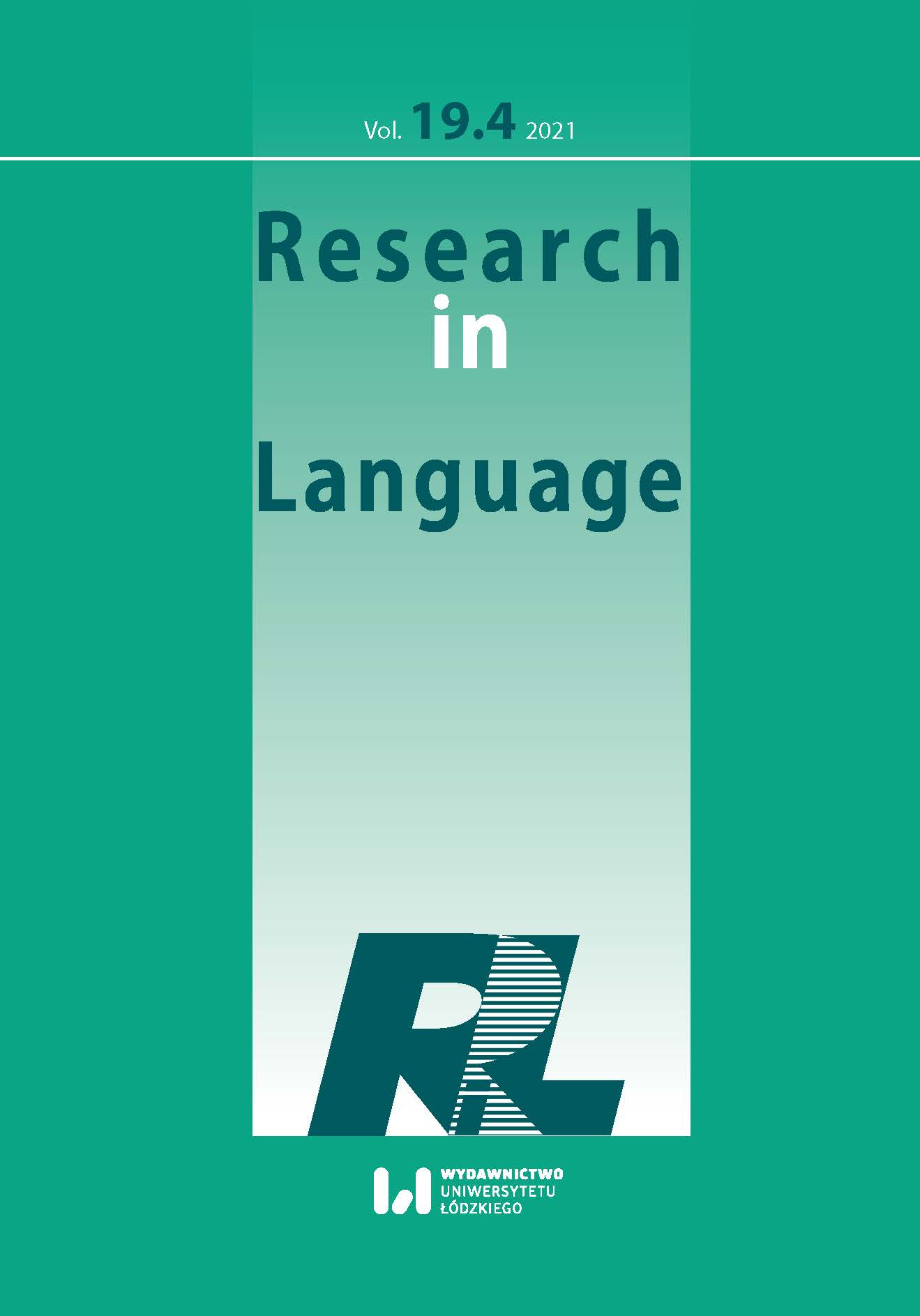Metaphorical Representation of the European Union in Political Cartoons in English and Latvian
DOI:
https://doi.org/10.18778/1731-7533.19.4.04Keywords:
metaphor, multimodality, political cartoonAbstract
The study is carried out in the framework of Conceptual Metaphor Theory, but since it considers political cartoons that, apart from linguistic, involve also other modes, the findings of theoreticians researching visual and multimodal metaphors are applied. The purpose of the present study is to identify and analyse the visual and multimodal metaphors encountered in cartoons focusing on the European Union matters and to find out if political events are presented in cartoons in English and Latvian on the basis of the same conceptual metaphors.
References
Bounegru, Liliana, and Charles Forceville. 2011. Metaphors in editorial cartoons representing the global financial crisis. Visual Communication 10(2): 209-229. https://doi.org/10.1177/1470357211398446
Google Scholar
DOI: https://doi.org/10.1177/1470357211398446
Eggertsson, Gunnar Theodór, and Charles Forceville. 2009. The HUMAN VICTIM IS ANIMAL metaphor in horror films. In: Forceville and Urios-Aparisi (eds), 429-449.
Google Scholar
El Refaie, Elisabeth. 2003. Understanding visual metaphor: The example of newspaper cartoons. Visual Communication 2: 75-95. https://doi.org/10.1177/1470357203002001755
Google Scholar
DOI: https://doi.org/10.1177/1470357203002001755
El Refaie, Elisabeth. 2009. Metaphor in political cartoons: Exploring audience responses. In: Forceville and Urios-Aparisi (eds), 173-196.
Google Scholar
Forceville, Charles. 2005. Addressing an audience: time, place, and genre. In Peter Van Straaten’s calendar cartoons. Humor: International Journal of Humor Research 18: 247-278. https://doi.org/10.1515/humr.2005.18.3.247
Google Scholar
DOI: https://doi.org/10.1515/humr.2005.18.3.247
Forceville, Charles. 2006a. Non-verbal and multimodal metaphor in a cognitivist framework: Agendas for research. In: G. Kristiansen, M. Achard, R. Dirven, and F. Ruiz de Mendoza Ibàñez (eds). Cognitive Linguistics: Current Applications and Future Perspectives, 379-402. Berlin: Mouton de Gruyter.
Google Scholar
Forceville, Charles. 2007. Multimodal metaphor in ten Dutch TV commercials. In Public Journal of Semiotics 1(1): 19-51. https://doi.org/10.37693/pjos.2007.1.8812
Google Scholar
DOI: https://doi.org/10.37693/pjos.2007.1.8812
Forceville, Charles. 2008. Metaphor in pictures and multimodal representations. In R. W. Jr. Gibbs (ed.) The Cambridge Handbook of Metaphor and Thought, 462-482. Cambridge: Cambridge University Press. https://doi.org/10.1017/CBO9780511816802.028
Google Scholar
DOI: https://doi.org/10.1017/CBO9780511816802.028
Forceville, Charles. 2009. Non-verbal and multimodal metaphor in a cognitivist framework: Agendas for research. In C. Forceville & E. Urios-Aparisi (eds.), 19-42. https://doi.org/10.1515/9783110215366
Google Scholar
DOI: https://doi.org/10.1515/9783110215366
Gibbs, Raymond W. Jr. 1994. The Poetics of Mind: Figurative Thought, Language, and Understanding. Cambridge: Cambridge University Press.
Google Scholar
Gibbs, Raymond W. Jr. (ed.). 2008. The Cambridge Handbook of Metaphor and Thought. Cambridge: Cambridge University Press. https://doi.org/10.1017/CBO9780511816802
Google Scholar
DOI: https://doi.org/10.1017/CBO9780511816802
Kövecses, Zoltan. 1990. Emotion Concepts. New York: Springer. https://doi.org/10.1007/978-1-4612-3312-1
Google Scholar
DOI: https://doi.org/10.1007/978-1-4612-3312-1
Kövecses, Zoltan. 2000. Metaphor and Emotion. Language, Culture and Body in Human Feeling. Cambridge: Cambridge University Press.
Google Scholar
Kövecses, Zoltan. 2002. Metaphor: A Practical Introduction. Oxford: Oxford University Press.
Google Scholar
Kövecses, Zoltan. 2005. Metaphor in Culture: Universality and Variation. Cambridge: Cambridge University Press. https://doi.org/10.1017/CBO9780511614408
Google Scholar
DOI: https://doi.org/10.1017/CBO9780511614408
Lakoff, George. 1987. Women, Fire and Dangerous Things: What Categories Reveal about the Mind. Chicago: University of Chicago Press. https://doi.org/10.7208/chicago/9780226471013.001.0001
Google Scholar
DOI: https://doi.org/10.7208/chicago/9780226471013.001.0001
Lakoff, George. 2006. The contemporary theory of metaphor. In D. Geeraerts (ed.), Cognitive Linguistics: Basic Readings, 186-238. Berlin/New York: Mouton de Gruyter.
Google Scholar
Lakoff, George & Johnson, Mark. 1980. Metaphors We Live By. Chicago: Chicago University Press.
Google Scholar
Lakoff, George & Turner, Mark. 1989. More than Cool Reason: A Field Guide to Poetic Metaphor. Chicago: University of Chicago Press. https://doi.org/10.7208/chicago/9780226470986.001.0001
Google Scholar
DOI: https://doi.org/10.7208/chicago/9780226470986.001.0001
Saraceni, Mario. 2003. The Language of Comics. London: Routledge.
Google Scholar
Schilperoord, Joost, and Alfons Maes. 2009. Visual metaphoric conceptualization in editorial cartoons. In: Forceville and Urios-Aparisi (eds), 213-240.
Google Scholar
Yus, Francisco. 2009. Visual metaphor versus verbal metaphor: A unified account. In: Forceville and Urios-Aparisi (eds), 147-172.
Google Scholar
Downloads
Published
How to Cite
Issue
Section
License

This work is licensed under a Creative Commons Attribution-NonCommercial-NoDerivatives 4.0 International License.










